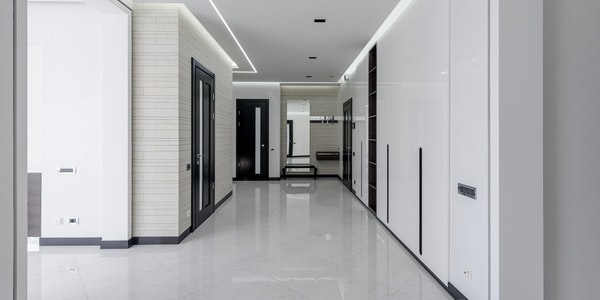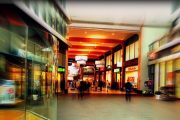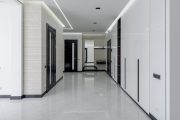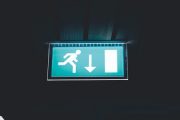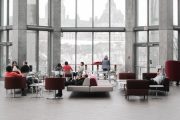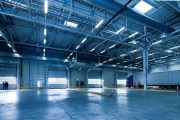Requirements for lighting in large supermarkets
- Create good visual conditions, ensure sufficient illuminance and lighting quality,
- Create a good business atmosphere, attract and induce customers’ shopping desires,
- The lighting layout must be flexible to adapt to the changes of commodities and containers,
- As too many peple rush into the supermarket, when the normal lighting runs out, the standby lighting should ensure normal activities keep going,
- Must come with emergency lighting, safety. Full evacuation lighting, and set up advertising lighting and flood lighting as needed,
- According to the different types of products displayed, the selection of light sources should highlight the changes in color rendering, color temperature, and brightness. At the same time, the design should emphasize lighting energy saving, lighting safety, uniformity, softness, no glare, and convenient management and maintenance.
Main indicators of commercial building lighting
- Illuminance standards The current international specifications and design manuals stipulate the most basic standards for the illuminance of general commercial lighting. For example, the illuminance in a shopping mall is generally 100-500lx. This standard is a general standard for all regions. In actual engineering design, lighting standards need forward-looking and flexibly select based on many factors such as regional differences, power consumption levels, supermarket scales, and commodity characteristics.
2. When designing the actual illuminance project, we took the code as a guideline and referred to the representative measured illuminance data of commercial buildings in LA and NY as the basis for the selection of the project illuminance. We think it is appropriate to control the illuminance of large supermarket lighting between 500-750 lx.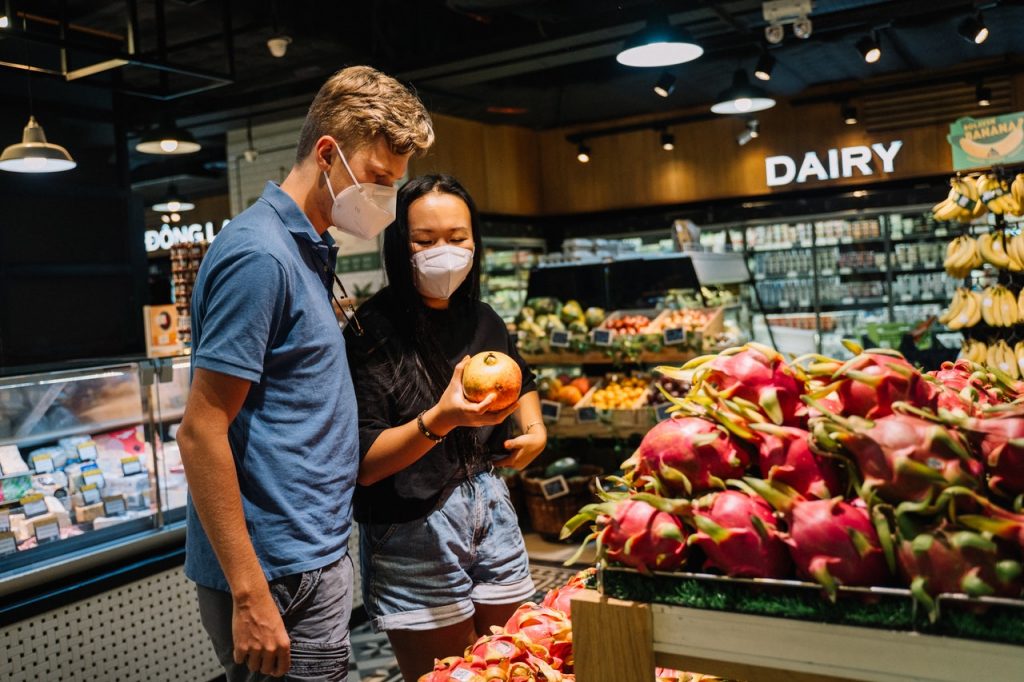
-
Light source color temperature and color rendering
In the internal and external environments of buildings, the color tones of artificial lighting sources have different visual effects on people’s psychology and physiology. Usually red, orange, and yellow are warm colors, and the color temperature of the light source is less than 3300K. Regarding blue, green, and cyan as cool colors, the color temperature of the light source is greater than 5000K. In addition, gold, silver, black, white, and gray are neutral colors, and the color temperature of the light source is about 3300-5000K.
The color rendering index is the measure of the degree of color vision distortion. It expresses its degree of difference. CRI of the light source is to evaluate the consistency of the color display of the object illuminated by the light source and the standard light source under the specified conditions. It comes through light shining on an object. The higher the color rendering index of the light source, the better its color rendering, and the clearer the object will be reflected.
the Significance of CCT & CRI
Whether the selection and configuration of the light source are appropriate in the supermarket lighting design is very important. In the general daily necessities store area, the illuminance value should reach 500-750lx, and the lighting method with cold color light and fluorescent lamp can meet the functional requirements, and can make customers feel that the shopping environment is clean and bright.
In the boutique clothing, gold, silver, diamond, and exquisite handicraft area, general lighting and local color lighting is always more popular. and warm-toned light sources should work as the main source. This can create an elegant and warm shopping atmosphere.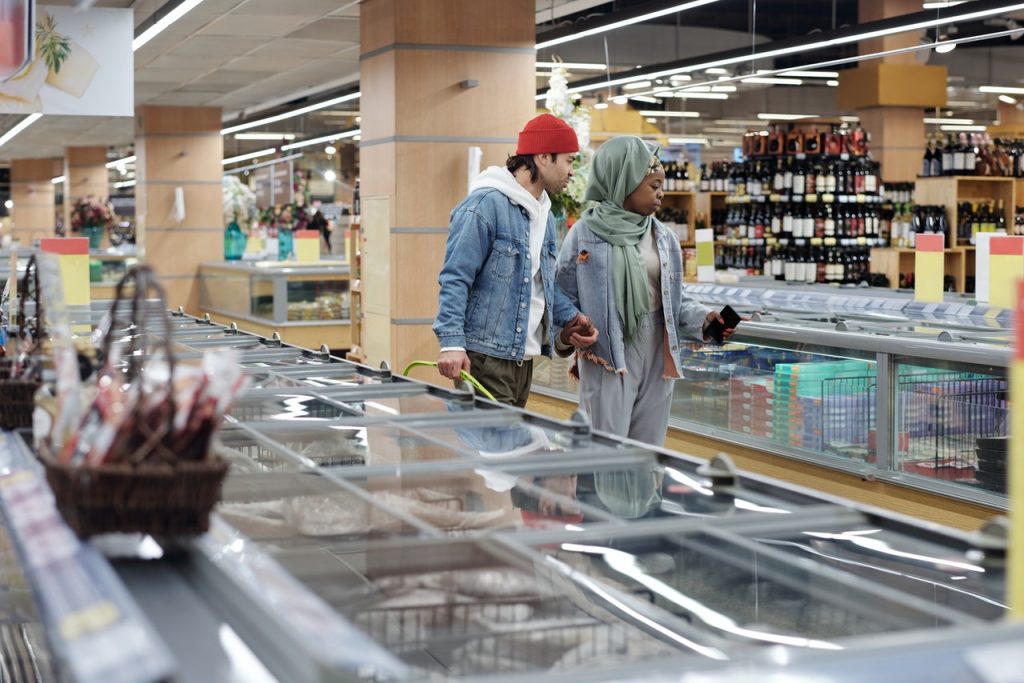
Especially, above the storage areas for fresh fish, meat and frozen foods, require strict lighting. Supermarkets often use a warm color light source. It comes with high color rendering to make the food stored in the supermarket very fresh. Also good psychological effects for customers, thereby stimulates a strong desire for shopping. This is an auxiliary condition to promote the popularity and prosperity of the supermarket.
Lighting method of building supermarket
-
General lighting
In order to illuminate the entire site and evenly set up lamps and lanterns to make the entire site’s horizontal illuminance basically uniform, the lighting method is general lighting. The first floor of the building is a rental unit shop, which mainly sells gold and silver jewelry, wedding dresses and clothing. There are also McDonald’s, coffee shops, beauty, banking, and photography as supplementary business areas.
In general lighting design, warm-color light sources are the first choice in principle, using Philips 4×30W/3000K grid fluorescent lamps and 2×13W/3000KPL energy-saving downlights to combine uniform lighting. Reserve a small distribution box with a meter in the shop area of each unit for the local lighting required by each.
The local lighting source should be a cold-light enclosed quartz halogen lamp with a color temperature of 3200K and 20-50W/12V, and the expected illuminance value can reach 950lx.
In general shopping areas such as daily necessities, tableware, home appliances and bicycles, the lighting source can be cold light. The lamp adopts Philips TLD80 series 2×36W/5000K double-tube fluorescent lamp, which has good color rendering (Ra=85).
Shopping Mall`s Lighting Standard
The shopping mall’s column network is 8m×8m without a ceiling. There are 3 uniform light strips in each span, and the lamp height is 3.0m. Engineers arrange the lights vertically to the shelves and the light is soft. And local lighting is no longer necessary. According to actual investigation, the illuminance is similar to that of the supermarket where display the similar exhibits. The illuminance can reach 750lx under the light band, 650lx between the light bands, and 500lx in the corridor.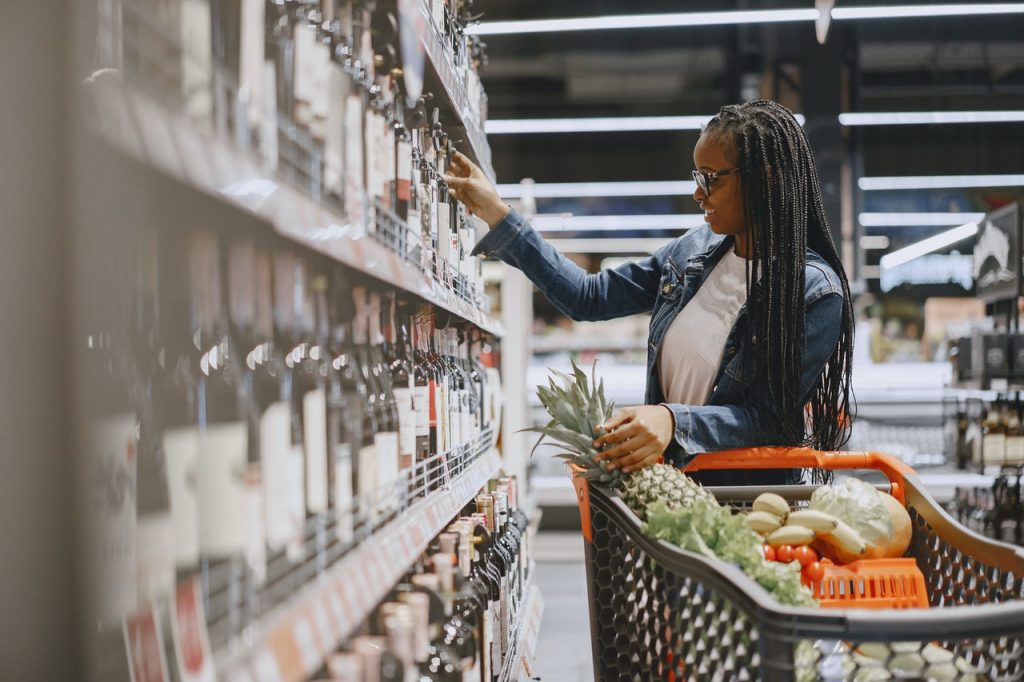
The display area for fresh aquatic products, frozen fish and meat, snacks and tonics, the general lighting scheme is the same as the general daily necessities area. The fixtures use 2×36W/3000K warm-tone light belt type double-tube fluorescent lights. The top of the refrigerator, and the top of the shelves are the same color 36W/3000K single-tube belt fluorescent lamps as the local lighting.
At present, some supermarket lamps are laid in parallel along the shelves, which is not appropriate. First, it is possible that the installed lamps will rework due to shading by the shelf. Second, the measured illuminance is far less uniform than the vertical arrangement. If the shelf is arranged against the wall, the lamps can be laid in parallel on the outside above the shelf.
-
Local lighting
Local lighting is a lighting method set up to meet the special needs of certain parts in a small area. It can only illuminate a limited display area, and usually install spotlights in the most suitable direction to effectively highlight the characteristics of the illuminated object. Its advantages are flexibility, power saving, and convenient disassembly and assembly.
For local lighting, it is advisable to choose a 20-50W/12V beam spotlight with a color temperature between 3000-3200K and specular reflection, or a ceramic metal halide lamp with a color temperature of less than 4200K and a power of 35W, 70W, and 150W. Its color rendering index Ra=96, especially suitable for street shop window lighting that requires high brightness.
-
Emergency lighting
After the normal lighting is extinguished due to a malfunction, the lighting for personnel to continue working or evacuate safely is called emergency lighting. It includes three categories: standby lighting, safety lighting and evacuation lighting.
GBJl33-1990 lighting design standards and CIE indoor lighting guidelines both stipulate that the illuminance of standby lighting should not be less than 10% of the normal lighting illuminance of the place, but sometimes it needs to be higher.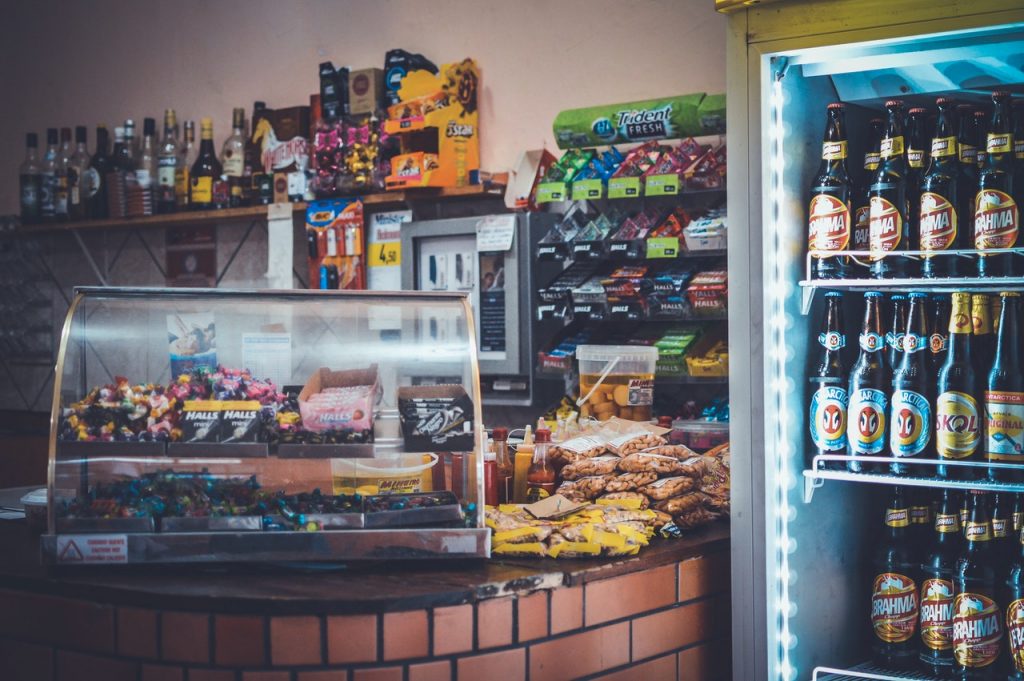
The normal lighting in each light band on the 2nd and 3rd floors is 4/5, and the accident lighting is 1/5, which is used as a part of normal lighting. Among them, safety lighting accounted for 15%, and accident, evacuation and safety exit lighting accounted for about 5%.
The emergency lighting is automatically switched and powered by dual power sources. In addition to the dual power supply for accident, evacuation, and induction lighting, cadmium-nickel batteries are also equipped in the lamps as emergency power sources.
The emergency lighting power switch time has corresponding standards. Design standards and CIE indoor lighting guidelines stipulate that it should not exceed 15s. The location of the cash register in the mall does not exceed 1.5s. The American standard stipulates that it is 10s. The British standard stipulates 5-15s. The Chinese standard also stipulates that the safety lighting switching time should not exceed 0.5s.
The “Code for Fire Protection Design of High-Rise Civil Buildings” (GB50045-95) clearly stipulates the lighting. For emergency lighting for evacuation, the minimum ground illumination should not be less than 0.5lx. Emergency lighting and evacuation signs can use batteries as a backup power source. The continuous power supply time shall not be less than 20 minutes. For buildings with a height greater than 100m, the continuous power supply time shall not be less than 30min.
-
On-duty lighting
On-duty lighting is lighting that is only activated during non-working hours. Lighting used by duty personnel for safety inspections and observations. There are many different options for task lighting. One is local lighting, the other is general lighting, which is convenient for people to control. The other is some or all emergency lighting. In this project, we adopt the method of accident evacuation lighting and on-duty lighting.
-
Flood lighting
Floodlighting gives a special effect to the appearance of the building. A good floodlighting design has certain standards. It will make full use of light intensity changes and color matching. The result is to make the building full of brilliance and color. It is a major feature of urban culture.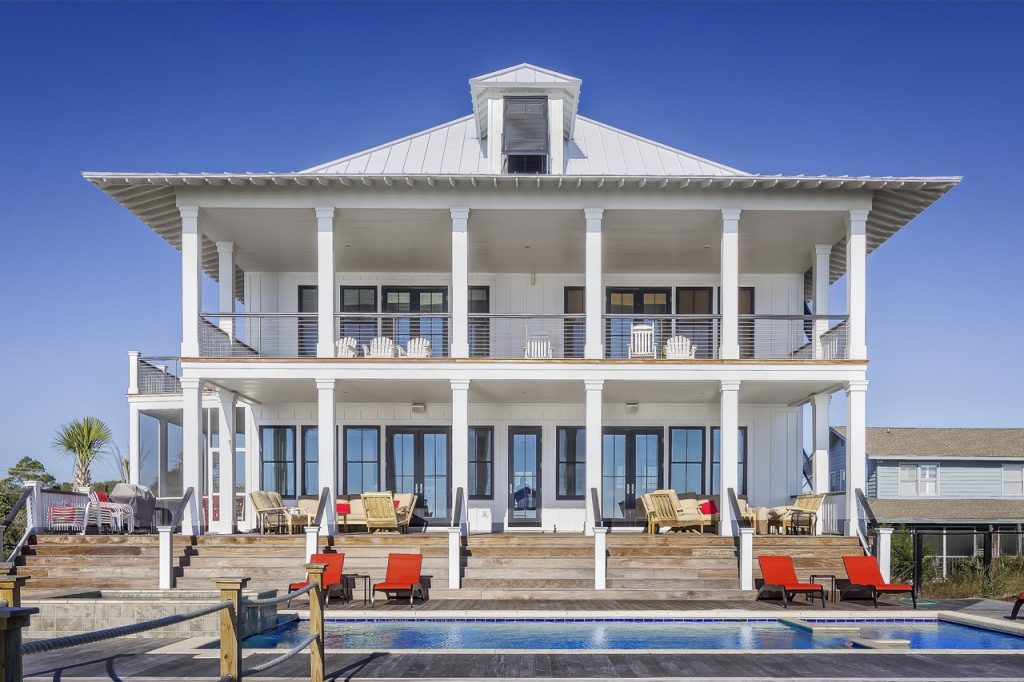
The building is located in the center of the Civic Square. The surrounding environment and the characteristics of its own building exterior wall materials are different. The illuminance of floodlighting should be no less than 150 lx. The engineering team set up 3×400W / 5000K metal halide lamp posts along the street on the ground floor. The lamp posts are about 10m apart. Floodlighting is ideal for floors 1-4. There are a total of 6 installation positions on the 4-story roof platform. 3×1500W/4000K scandium sodium lamp floodlighting the facades of 5-26-story middle- and high-rise buildings.Engineers installed 8 sets of 3×250W/2200K HPS lights on the front and back of the 26-story building. The distance between the lamp and the lamp is 4.0m. This is a common flood lighting method for flag-shaped pitched roofs.
In the design, floodlights come with different color temperatures. Engineers use them for the upper, middle and lower floors of the building. From the simulated night scene effect diagram, it shows that the outline is clear, the layers are distinct. The colors are also harmonious and the effect is good. The building property management room uniformly controls all floodlighting.
-
Advertising lighting
Desingers installed total of 68 sets of 250-400W/4500K MH lamps. They set up one fixture every 2m above the billboards on the 4-story roof cornice. This is the advertising lighting of the building. In addition, McDonald’s and coffee shops use dynamic neon advertising lighting.
-
Obstacle lighting
In order to ensure the safety of night flight, designers have set up a total of 10 obstacle lights. Among them, a light is arranged at each of the four corners at an elevation of 91m. Two are arranged at an elevation of 95m and 100m respectively. Two aviation obstacle signal lights are also arranged at the flagpole at an elevation of 105m.
Lighting energy saving
First of all, when designing and determining the illuminance, it must be based on reality. Refer to the norms, position reasonably, and avoid pursuing high standards.
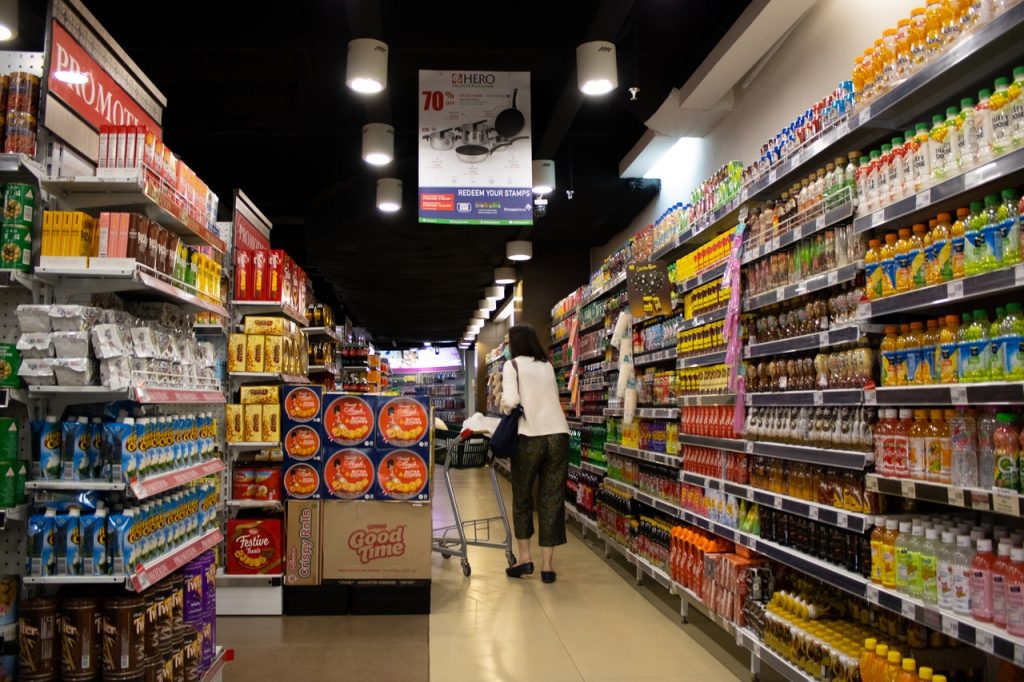
Secondly, a light source with high luminous efficiency, high color rendering and long life should be selected. And choose efficient fixtures.
The fluorescent light source of supermarket lighting should adopt electronic ballast. Because of its low power consumption, high power factor and stable performance. A new generation of composite ballast is also an ideal choice. Compound ballasts make up for some of the shortcomings of electronic ballasts and have better performance. In addition, a split-phase reactive power automatic compensation device can be used to improve the power factor to achieve the purpose of energy saving and create a good green lighting environment.

